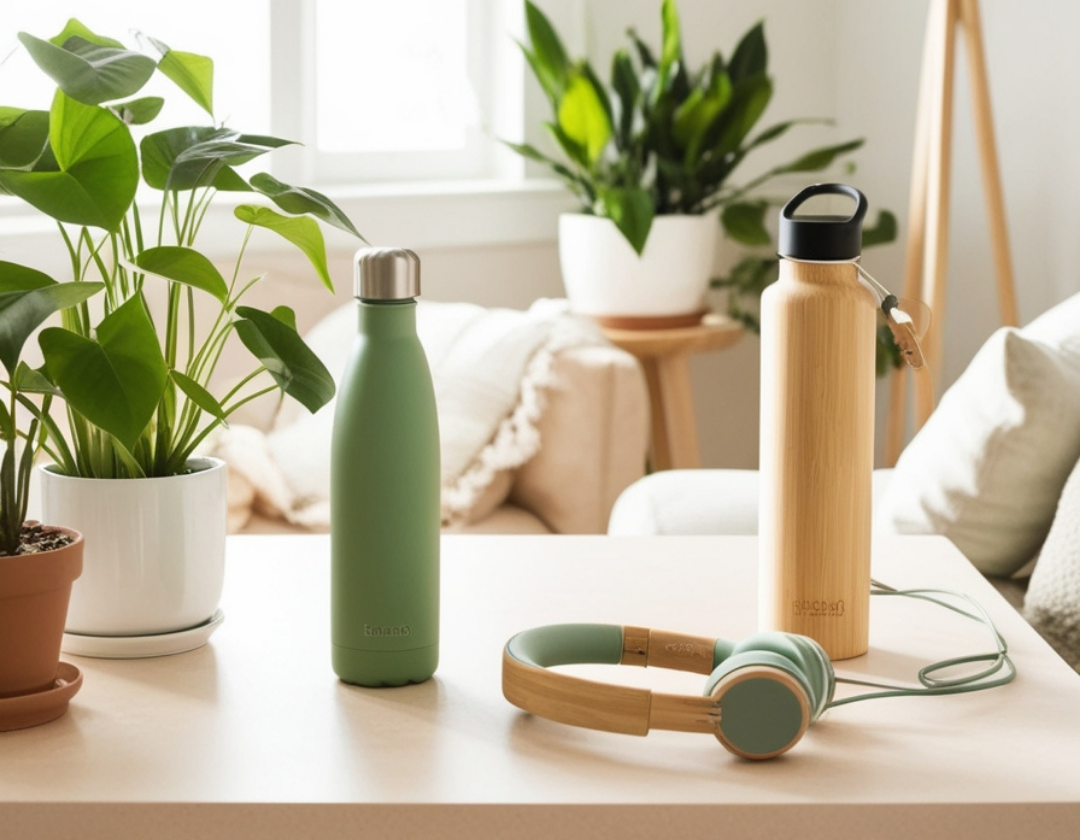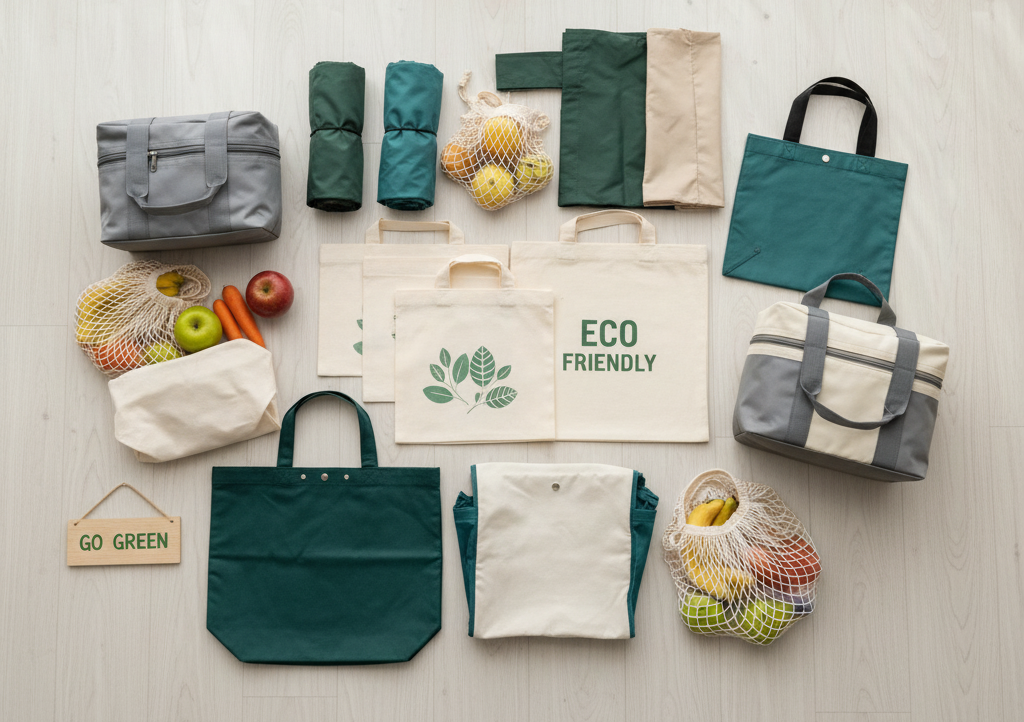7 Simple Steps to Zero-Waste Grocery Shopping in 2025 for a Greener Home
Introduction
Zero-Waste Grocery Shopping might sound overwhelming, but did you know the average household throws away almost 20% of the food it buys each year (USDA, 2023)? That’s like carrying five grocery bags home and tossing one straight into the trash. Add in the mountains of plastic packaging, and it’s clear: traditional grocery shopping isn’t working for us, or the planet.
If you’ve ever felt frustrated by the waste piling up in your kitchen, you’re not alone. The good news? Zero-waste grocery shopping isn’t about doing everything perfectly, it’s about making small, smart choices that add up. And many of those choices are simple and free.
This guide will walk you through seven practical steps to shop waste-free, with tips, real-world examples, and eco-friendly swaps that fit into your everyday life.
Zero Waste Grocery Shopping: Why This Matters
Zero-waste grocery shopping is part of a bigger shift toward sustainable living at home.
-
Environmental impact: Packaging makes up nearly 40% of all plastic waste (EPA, 2023). Most isn’t recycled.
-
Financial savings: Buying in bulk and avoiding packaged goods can save households hundreds of dollars a year.
-
Healthier living: Less processed, pre-packaged food usually means fresher meals and fewer additives.
When you shop consciously, you’re not just filling your pantry, you’re building habits that protect your wallet and the world.
Beginner’s Guide to Zero-Waste Grocery Shopping.
Zero-Waste Grocery Shopping is easier than you think. In 2025, try these 7 simple steps to reduce plastic, save money, and build eco-friendly habits today.
1. Bring Reusable Bags and Produce Bags
One of the simplest eco-friendly habits to adopt is carrying your own reusable grocery bag. Plastic shopping bags are still handed out by the billions every year. Most are used once and then discarded, where they take centuries to break down.
Keeping a few sturdy reusable grocery bags in your car, backpack, or near your front door ensures you never forget them. For produce, lightweight mesh produce bags are an upgrade over the flimsy plastic ones from the store. They’re washable, breathable, and much better for storing fruits and vegetables at home.
Important note: Whilst reusable bags are a wonderful way we reduce plastic waste and shop sustainably, we are at risk of falling prey to dangerous bacteria if we don’t clean/wash them regularly. So make sure to have a routine where you wash your reusable bags after use.
If you’re already using reusable bags, but now have a stack of them and are confused and sure about what to do, here’s a post on how to manage that problem.
By turning reusable grocery shopping bags into a habit, you’re making one of the easiest and most visible eco-friendly changes.
2. Shop the Bulk Bins to Improve Zero Waste at Home
Packaged dry goods like rice, beans, and pasta often come wrapped in plastic. Bulk bins are a fantastic alternative for zero-waste grocery shoppings because they let you purchase only what you need, removing the excess plastic packaging. (You can also check out your local Bulk Barn for more bulk bin food options)
Bring your own jars, cloth bags, or stainless steel containers. Ask staff to weigh them before filling so the container’s weight doesn’t count against your purchase. Many bulk stores even encourage it.
As a real life example: If you buy 2 pounds of rice weekly, that’s over 100 plastic bags avoided each year when you switch to bulk bin purchases.
-
Check out these glass storage jars. There’s a starter set you can give a try: A starter set of glass bulk jars [Insert affiliate link to glass storage jars].
Shopping in bulk doesn’t just reduce waste, it also saves money. Bulk spices, nuts, and grains are often cheaper per ounce compared to their packaged versions.
3. Choose Loose Produce Over Packaged
Ever noticed cucumbers wrapped in plastic or apples sitting in Styrofoam trays? This unnecessary packaging doesn’t make food fresher, it just creates waste and drives up the cost.
Choosing unpackaged produce is one of the most powerful eco-friendly habits you can adopt. Loose produce is often cheaper, fresher, and available in smaller quantities to reduce food waste. Farmers’ markets are especially good for zero-waste grocery shopping since produce is rarely wrapped in plastic.
-
Affiliate Tip: A sturdy, reusable market tote [Insert affiliate link].
Each time you skip packaged produce, you’re voting with your dollars for less plastic on store shelves.
4. Bring Your Own Containers for Deli and Meat
One of the biggest waste culprits in grocery shopping comes from the deli or butcher counter, where items are wrapped in multiple layers of plastic and Styrofoam trays.
The deli counter is notorious for wasteful packaging with things like cheese, meats, and prepared foods often wrapped in plastic and Styrofoam trays and we all know these materials are difficult or near impossible to recycle.
What you can do is bring your own stainless steel or glass containers to the store. Most stores allow this and you can ask staff to weigh the container before filling with your purchase. Even starting small, like asking for cheese (for example) in your own jar, makes a noticeable difference.
-
Affiliate Tip: Leak-proof stainless steel/glass containers [Insert affiliate link].
Adopting this practice shows staff and other shoppers that zero-waste grocery shopping is doable. Over time, these small requests can even influence store policies. Start small, try this approach with cheese, olives, or salads.
5. Buy in Bulk, Cook at Home
Convenience foods may save time, but they almost always come wrapped in layers of packaging. Frozen dinners, individually wrapped snacks, and pre-cooked meals create piles of waste.
Buying in bulk and cooking meals at home not only cuts packaging but also saves money. Meal prepping is especially effective: cook larger batches once a week, then store leftovers in reusable glass containers. When you meal prep using reusable glass containers, asides saving money, you also reduce waste and eat healthier, so it’s a win-win….win!
Real World Example: A couple who switched to cooking in bulk reported saving $60 per month on groceries while cutting their household trash by half.
-
Affiliate Tip: Glass meal-prep containers [Insert affiliate link]
This is one of the best long-term eco-friendly habits you can build.
6. Skip Single-Use Plastics as a Zero Waste Policy in Your Home
Plastic bottles, cling wrap, and disposable straws are everywhere in grocery aisles, and they add up fast. Globally, we buy 1 million plastic bottles every minute (UNEP, 2022), most of which never get recycled.
The solution is to switch to reusables. Stainless steel bottles, beeswax food wraps, and washable straws
Switching to reusables makes a huge difference. Stainless steel bottles, beeswax wraps, and washable straws replace hundreds of disposables over time. Each swap reduces demand for single-use plastics, pushing companies to rethink their packaging. These are simple swaps that quickly pay for themselves overtime.
-
Affiliate Tip: Beeswax food wraps [Insert affiliate link].
7. Plan Ahead and Make a List
Impulse buys are often the most wasteful — over-packaged, processed, and more likely to go uneaten. That bag of salad you forgot in the fridge? Multiply it across households and it becomes part of the 40% of food wasted annually in the U.S. (NRDC).
You can learn more here: https://www.epa.gov/sustainable-management-food/united-states-2030-food-loss-and-waste-reduction-goal
Planning meals and making a list before you head out helps you stick to what you need. This reduces packaging waste, saves money, and keeps grocery trips stress-free.
-
Affiliate Tip: Zero-waste meal planners [Insert affiliate link].
Meal planning is the backbone of sustainable living at home since it reduces food waste, improves nutrition, and saves time.
A Few Quick Tips to Help as You Get Started
Dedicate one tote as your “produce bag” to keep it clean.
Reuse glass jars from pasta sauce or peanut butter. They’re perfect for dry goods.
Place loose fruits and vegetables straight into mesh produce bags or your tote.
Keep one or two glass or stainless steel containers in your grocery bag so you’re never caught without them.
Dedicate one afternoon each week for cooking larger batches. Store extras in reusable meal-prep containers.
Make a shopping list leveraging your phone’s notes app or a reusable planner so your list is always on hand.
Common Mistakes to Avoid
-
Forgetting your bags and jars: keep extras in your car or bag.
-
Trying to change everything at once: start with one or two swaps.
-
Believing zero-waste is all-or-nothing: every small step matters.
-
Not asking store staff for assistance: most are fine with reusable containers if you ask.
Wrapping up
Zero-waste grocery shopping doesn’t require perfection. It’s about small, mindful habits, from reusing jars to skipping packaged produce, that add up over time. You’ll save money, reduce clutter, and feel good knowing you’re helping the planet with every trip to the store.
💡 Start with just one of these steps on your next grocery run. Before long, waste-free shopping will feel second nature.
👉 Subscribe to NatGeoTips for weekly eco-living inspiration and explore our recommended sustainable products to make your journey easier.
FAQ
Q: Is zero-waste grocery shopping more expensive?
A: No. Buying in bulk and skipping packaging often lowers your grocery bill.
Q: Can I bring my own containers to stores?
A: Yes, most stores allow it. Ask staff to weigh your container before filling.
Q: What’s the easiest first step?
A: Bring reusable bags and avoid packaged produce. It’s simple, free, and effective.
Q: How do I handle items that don’t come package-free?
A: Choose the least packaged option, or buy in bulk when available.




